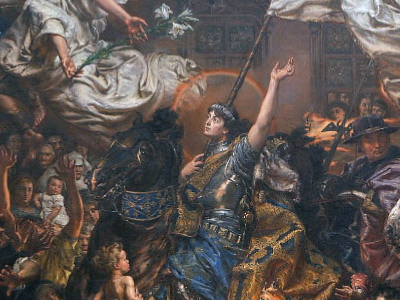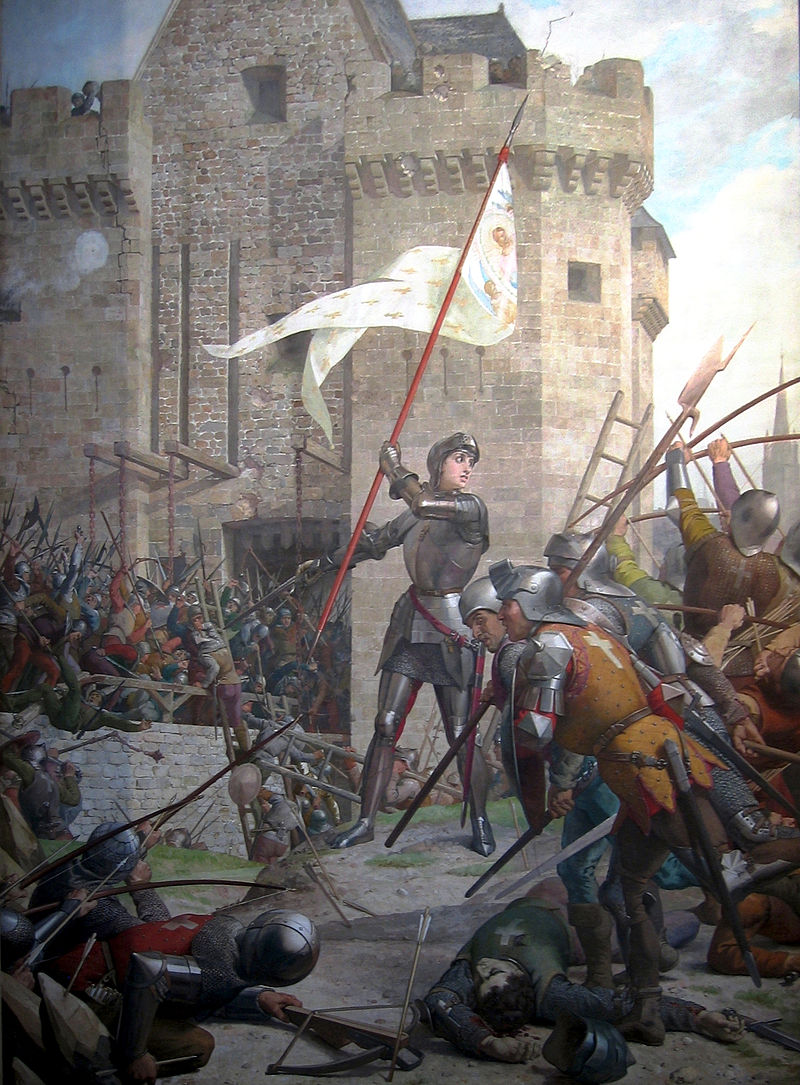Siege of Orléans (1428–1429)
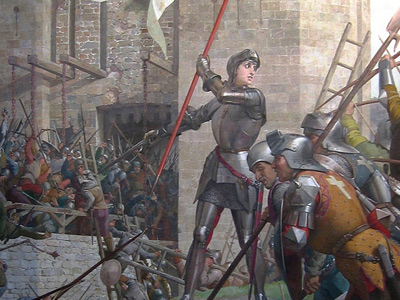
Joan's Arrival at Orléans
For years, vague prophecies had been circulating in France concerning an armored maiden who would rescue France. Many of these prophecies foretold that the armored maiden would come from the borders of Lorraine, where Domrémy, Joan's birthplace, is located. As a result, when word reached the besieged citizens of Orléans concerning Joan's journey to see the King, expectations and hopes were high.
Escorted by Baudricourt, Joan of Arc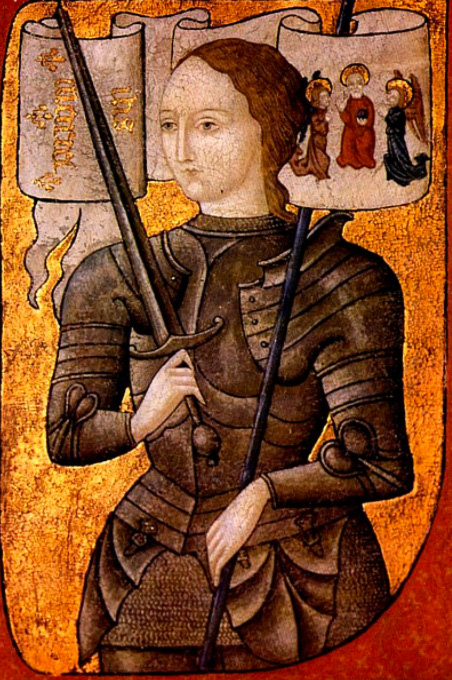 Joan of Arc (1412-1431), is considered a heroine of France for her role during the Lancastrian phase of the Hundred Years' War and was canonized as a Roman Catholic saint. She gained prominence after the siege was lifted only nine days later. This long-awaited event boosted French morale and paved the way for the final French victory. Joan of Arc » arrived in Chinon on March 6, 1429, and met with the skeptical La Trémoille. On March 9, she finally met the Dauphin Charles, although it would be a few days more before she had a private meeting where the Dauphin was finally convinced of her "powers" (or at least, her usefulness). Nonetheless, he insisted she first proceed to Poitiers to be examined by church authorities. With the clerical verdict that she posed no harm and could be safely taken on, Dauphin Charles finally accepted her services on March 22. She was provided with a suit of plate armor, a banner, a pageboy, and heralds.
Joan of Arc (1412-1431), is considered a heroine of France for her role during the Lancastrian phase of the Hundred Years' War and was canonized as a Roman Catholic saint. She gained prominence after the siege was lifted only nine days later. This long-awaited event boosted French morale and paved the way for the final French victory. Joan of Arc » arrived in Chinon on March 6, 1429, and met with the skeptical La Trémoille. On March 9, she finally met the Dauphin Charles, although it would be a few days more before she had a private meeting where the Dauphin was finally convinced of her "powers" (or at least, her usefulness). Nonetheless, he insisted she first proceed to Poitiers to be examined by church authorities. With the clerical verdict that she posed no harm and could be safely taken on, Dauphin Charles finally accepted her services on March 22. She was provided with a suit of plate armor, a banner, a pageboy, and heralds.
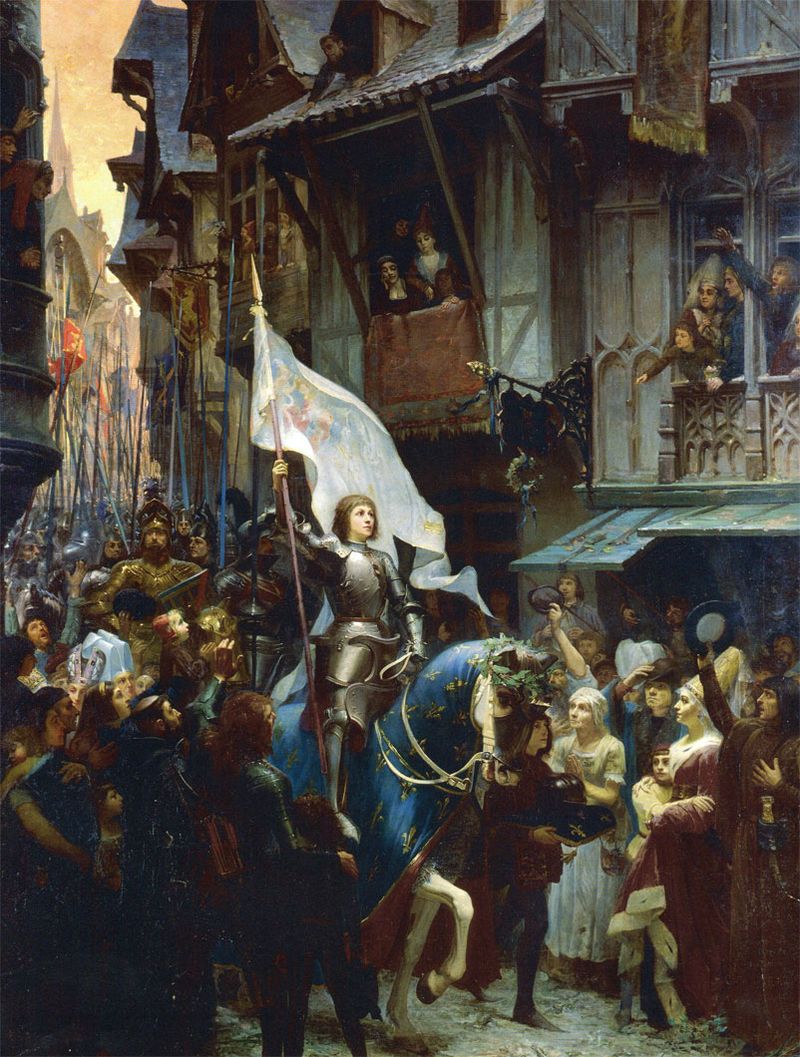
Joan of Arc enters Orléans (painting by J.J. Sherer, 1887)
Joan's first mission was to join a convoy assembling at Blois, under the command of Marshal Jean de La Brosse, Lord of Boussac bringing supplies to Orléans. It was from Blois that Joan dispatched her famous missives to the English The Kingdom of England was a sovereign state on the island of Great Britain from about 927, when it emerged from various Anglo-Saxon kingdoms, until 1 May 1707, when it united with Scotland to form the Kingdom of Great Britain. The Viking invasions of the 9th century upset the balance of power between the English kingdoms, and native Anglo-Saxon life in general. The English lands were unified in the 10th century in a reconquest completed by King Æthelstan in 927. siege commanders, calling herself "the Maiden" (La Pucelle), and ordering them, in the name of God, to "Begone, or I will make you go".
The Kingdom of England was a sovereign state on the island of Great Britain from about 927, when it emerged from various Anglo-Saxon kingdoms, until 1 May 1707, when it united with Scotland to form the Kingdom of Great Britain. The Viking invasions of the 9th century upset the balance of power between the English kingdoms, and native Anglo-Saxon life in general. The English lands were unified in the 10th century in a reconquest completed by King Æthelstan in 927. siege commanders, calling herself "the Maiden" (La Pucelle), and ordering them, in the name of God, to "Begone, or I will make you go".
The relief convoy, escorted by some 400 - 500 soldiers, finally left Blois on 27 or 28 April, in nearly religious processional array. Joan had insisted on approaching Orléans from the north (through the Beauce region), where English forces were concentrated, intent on fighting them immediately. But the commanders decided to take the convoy in a circuitous route around the south (through the Sologne region) without telling Joan, reaching the south bank of the Loire at Rully (near Chécy), some four miles east of the city. Orléans' commander, John of Dunois, came out to meet them across the river. Joan was indignant at the deception and ordered an immediate attack on St. Jean-le-Blanc, the nearest English bastille on the south bank. But Dunois, supported by the Marshals, protested and with some effort, finally prevailed on her to allow the city to be resupplied before any assaults on anything. The provisions convoy approached the landing of Port Saint-Loup, across the river from the English bastille of Saint-Loup on the north bank.
While French The Kingdom of France is the historiographical name or umbrella term given to various political entities of France in the medieval and early modern period. It was one of the most powerful states in Europe since the High Middle Ages. It was also an early colonial power, with possessions around the world. Colonial conflicts with Great Britain led to the loss of much of its North American holdings by 1763. The Kingdom of France adopted a written constitution in 1791, but the Kingdom was abolished a year later and replaced with the First French Republic. skirmishers kept the English garrison of Saint-Loup contained, a fleet of boats from Orléans sailed down to the landing to pick up the supplies, Joan and 200 soldiers. One of Joan's reputed miracles was said to have taken place here: the wind which had brought the boats upriver suddenly reversed itself, allowing them to sail back to Orléans smoothly under the cover of darkness. Joan of Arc entered Orléans in triumph, on April 29, around 8:00 PM, to much rejoicing. The rest of the convoy returned to Blois.
The Kingdom of France is the historiographical name or umbrella term given to various political entities of France in the medieval and early modern period. It was one of the most powerful states in Europe since the High Middle Ages. It was also an early colonial power, with possessions around the world. Colonial conflicts with Great Britain led to the loss of much of its North American holdings by 1763. The Kingdom of France adopted a written constitution in 1791, but the Kingdom was abolished a year later and replaced with the First French Republic. skirmishers kept the English garrison of Saint-Loup contained, a fleet of boats from Orléans sailed down to the landing to pick up the supplies, Joan and 200 soldiers. One of Joan's reputed miracles was said to have taken place here: the wind which had brought the boats upriver suddenly reversed itself, allowing them to sail back to Orléans smoothly under the cover of darkness. Joan of Arc entered Orléans in triumph, on April 29, around 8:00 PM, to much rejoicing. The rest of the convoy returned to Blois.
HISTORY
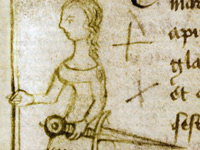
RESOURCES
This article uses material from the Wikipedia article "Siege of Orléans", which is released under the Creative Commons Attribution-Share-Alike License 3.0.
© Stories Preschool. All Rights Reserved.
